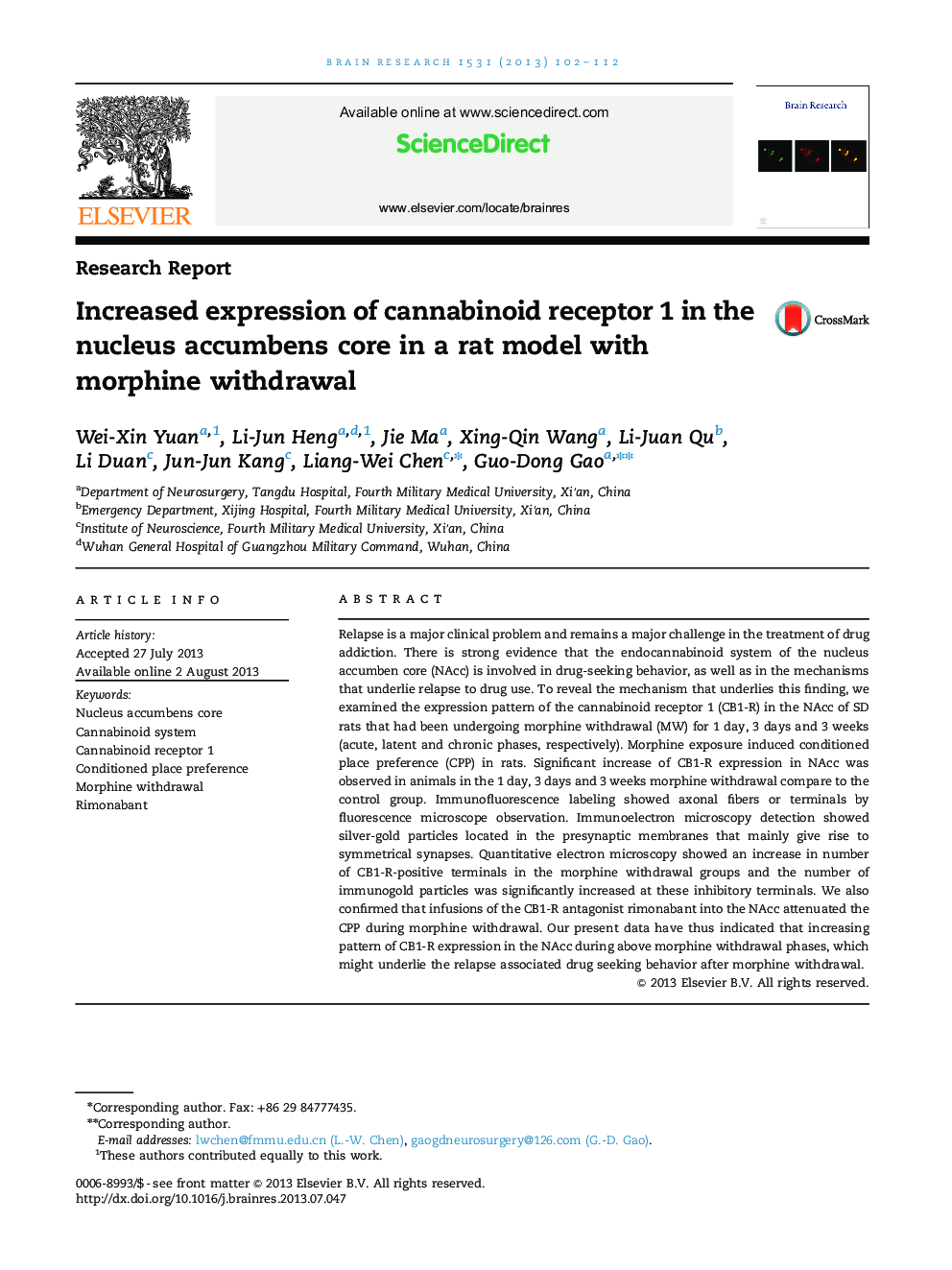| Article ID | Journal | Published Year | Pages | File Type |
|---|---|---|---|---|
| 6263718 | Brain Research | 2013 | 11 Pages |
â¢Rats showed persistent morphine CPP during morphine withdrawal.â¢Expression of CB1-R in NAcc increased markedly in morphine withdrawal rats.â¢Increased CB1-R primarily located on the presynaptic membrane of inhibitory synapses.â¢Intra-NAcc rimonabant administration prohibited persistent morphine CPP expression.
Relapse is a major clinical problem and remains a major challenge in the treatment of drug addiction. There is strong evidence that the endocannabinoid system of the nucleus accumben core (NAcc) is involved in drug-seeking behavior, as well as in the mechanisms that underlie relapse to drug use. To reveal the mechanism that underlies this finding, we examined the expression pattern of the cannabinoid receptor 1 (CB1-R) in the NAcc of SD rats that had been undergoing morphine withdrawal (MW) for 1 day, 3 days and 3 weeks (acute, latent and chronic phases, respectively). Morphine exposure induced conditioned place preference (CPP) in rats. Significant increase of CB1-R expression in NAcc was observed in animals in the 1 day, 3 days and 3 weeks morphine withdrawal compare to the control group. Immunofluorescence labeling showed axonal fibers or terminals by fluorescence microscope observation. Immunoelectron microscopy detection showed silver-gold particles located in the presynaptic membranes that mainly give rise to symmetrical synapses. Quantitative electron microscopy showed an increase in number of CB1-R-positive terminals in the morphine withdrawal groups and the number of immunogold particles was significantly increased at these inhibitory terminals. We also confirmed that infusions of the CB1-R antagonist rimonabant into the NAcc attenuated the CPP during morphine withdrawal. Our present data have thus indicated that increasing pattern of CB1-R expression in the NAcc during above morphine withdrawal phases, which might underlie the relapse associated drug seeking behavior after morphine withdrawal.
